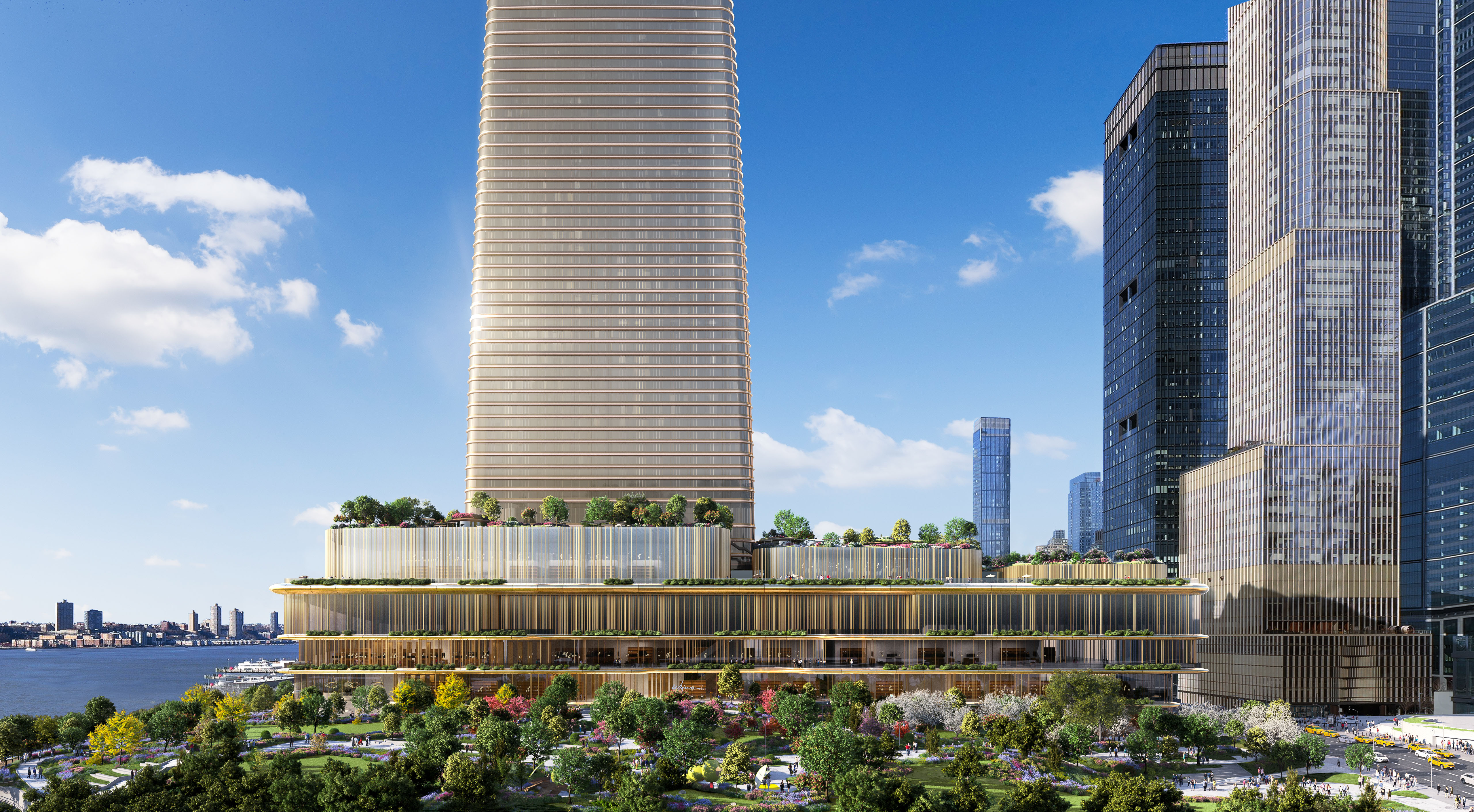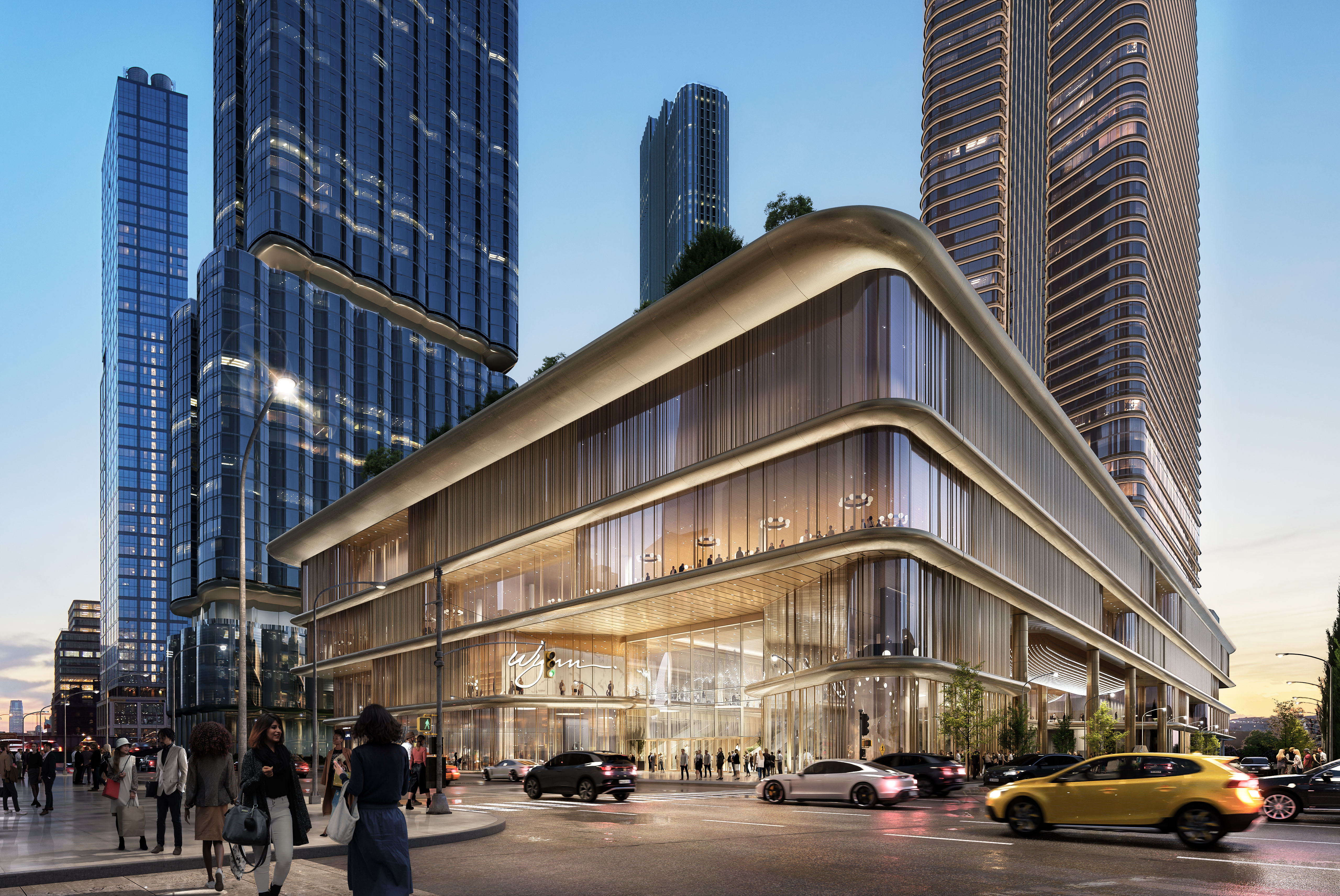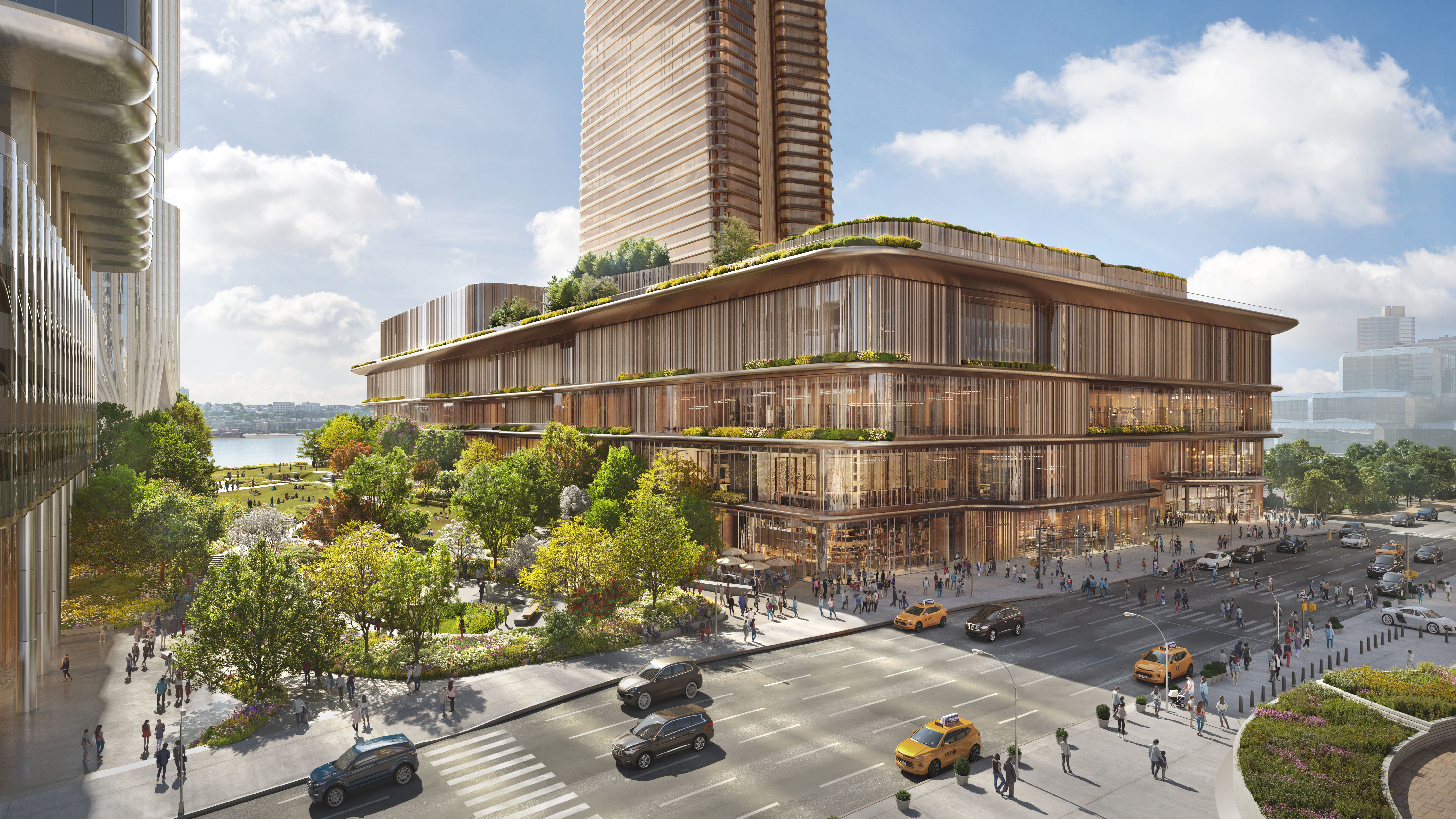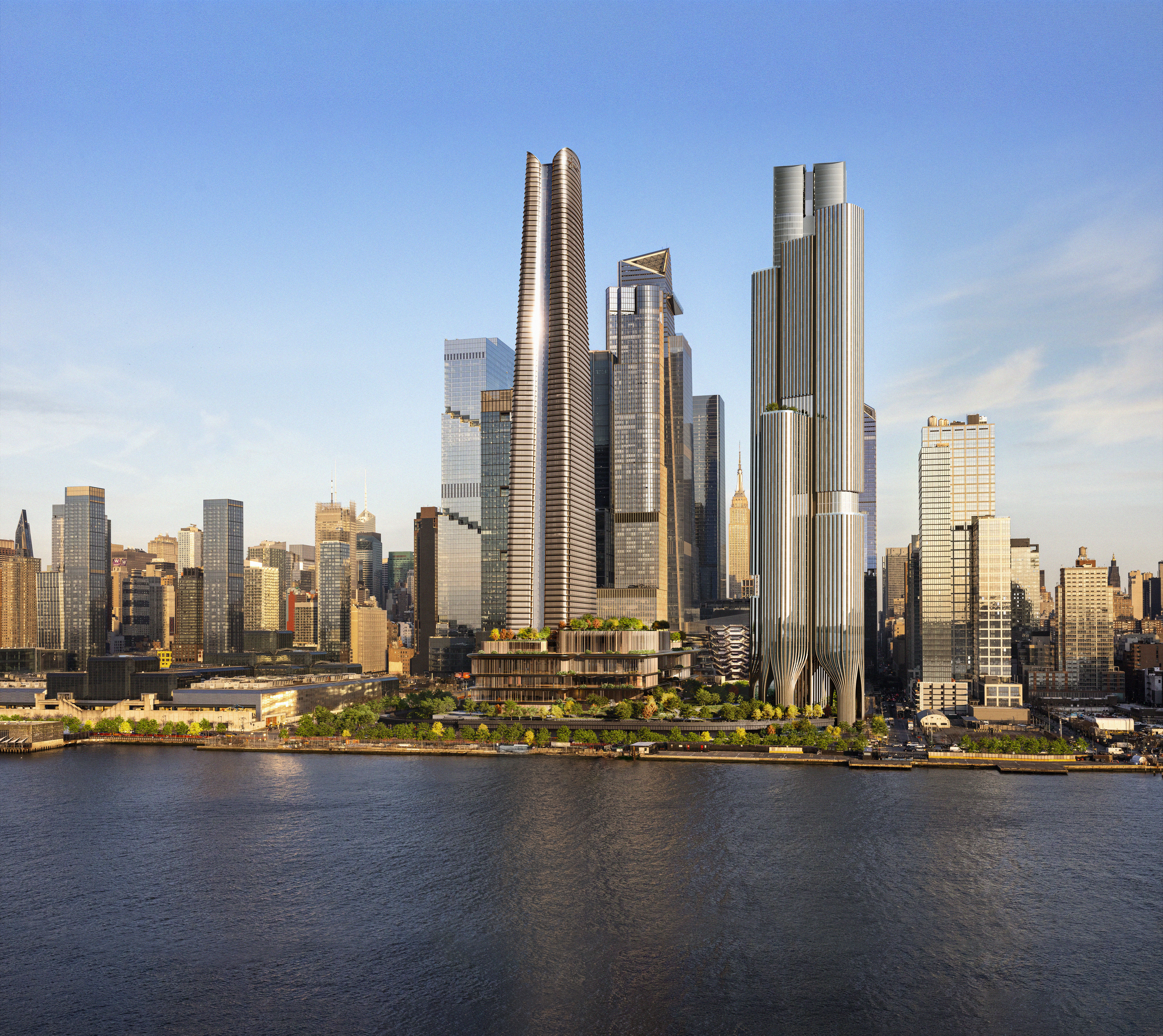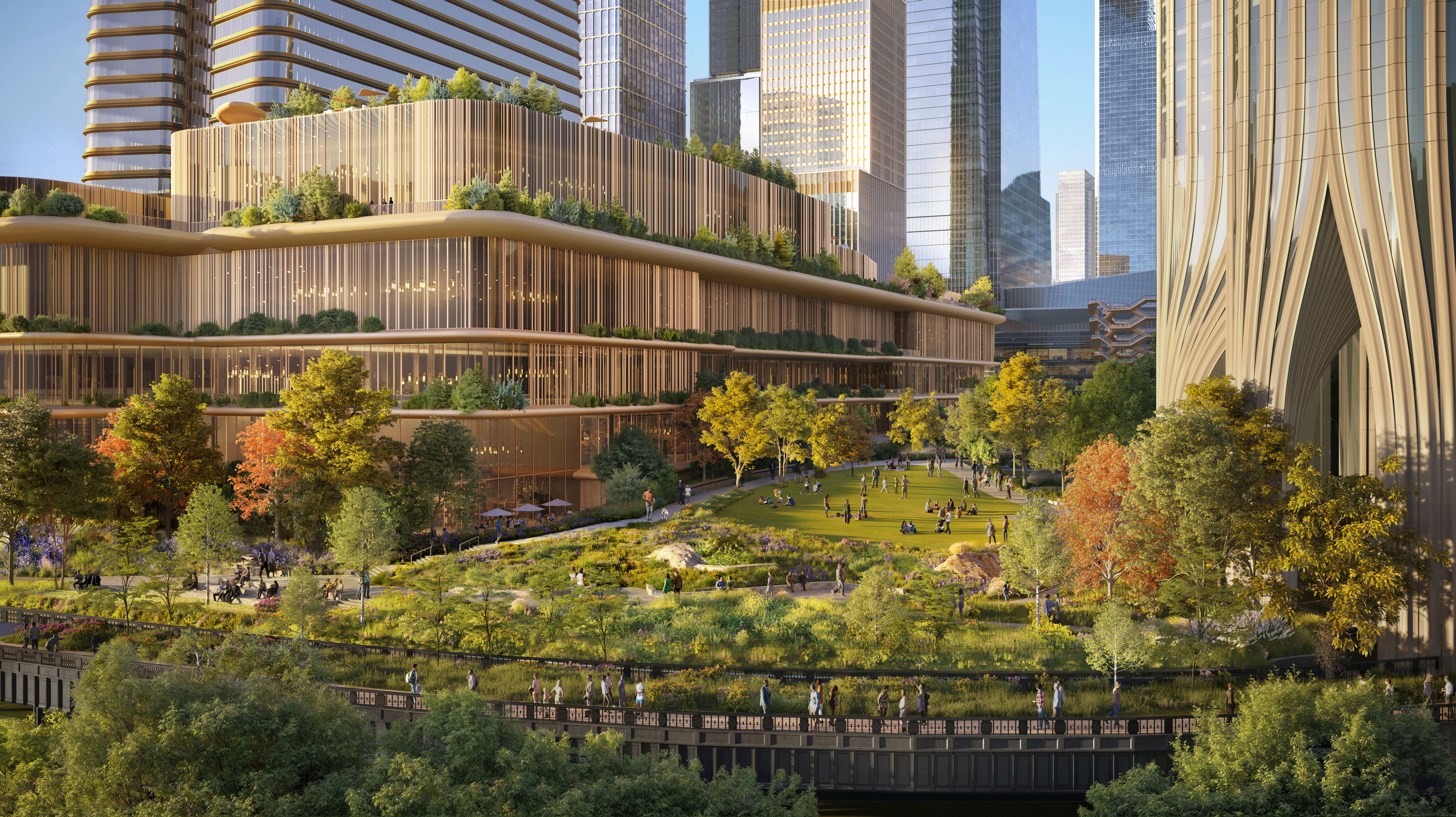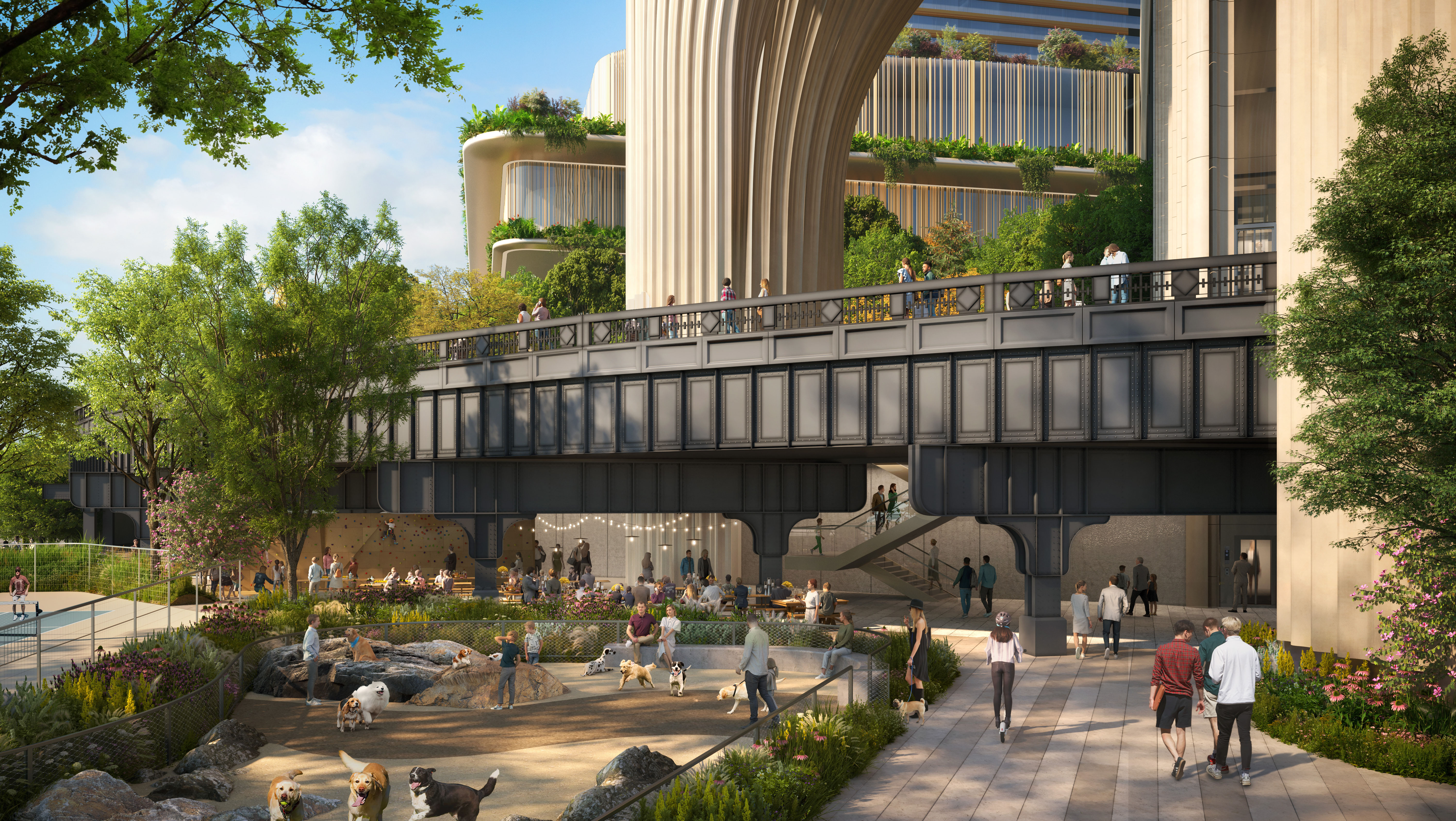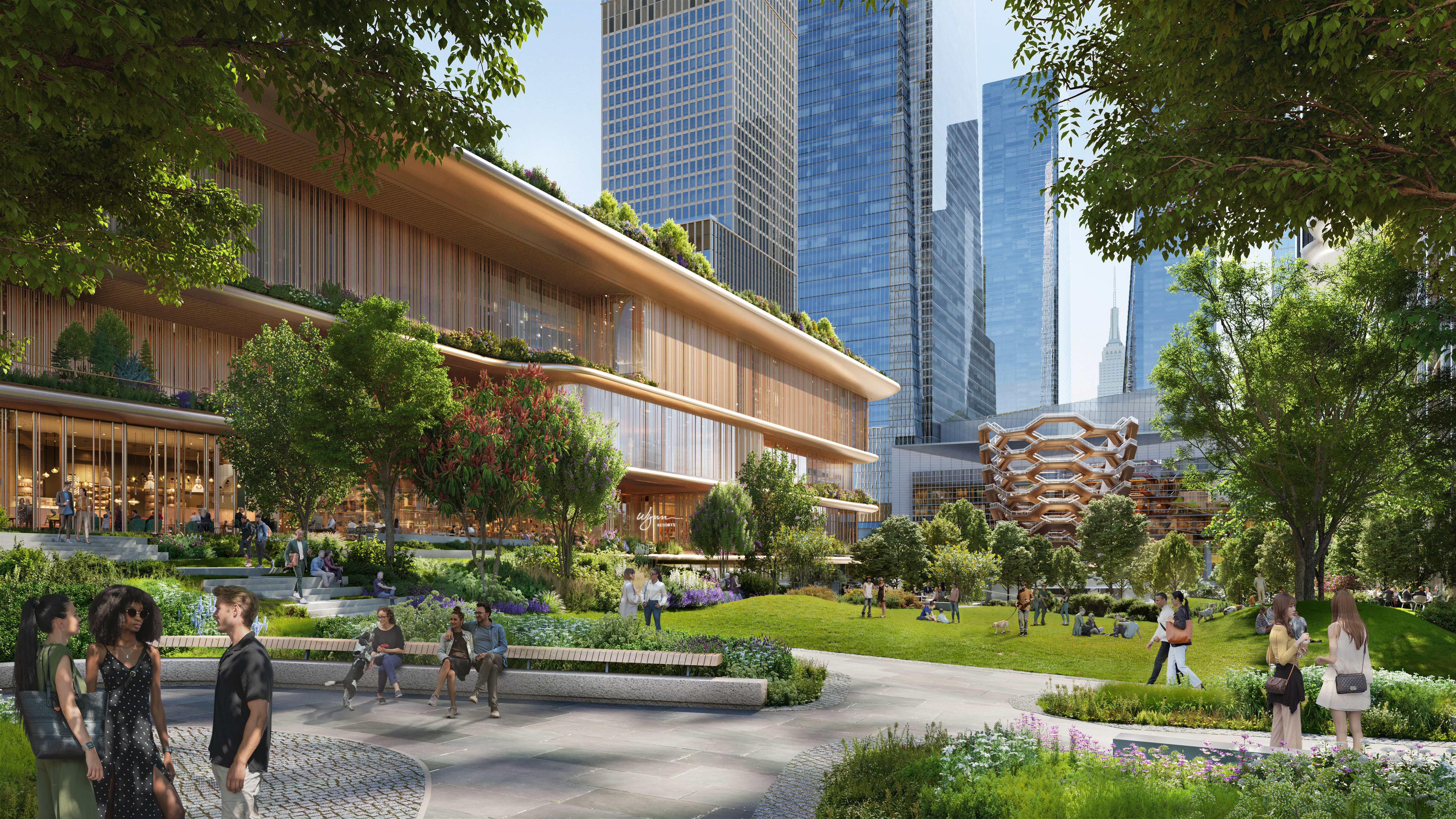Battling casino opponents and competitors for a downstate gaming license, Related Companies and Wynn Resorts looked to wow decision-makers with a glittering plan for the western Hudson Yards.
The companies released renderings of the $12 billion project sited for the undeveloped side of the rail yard, adjacent to Related’s original Hudson Yards complex. The renderings show off potential architectural marvels for the neighborhood, as well as a 5.6-acre public park, roughly the size of Bryant Park in Midtown.
A press release from the developers emphasized features of the proposed Hudson Green park and how the development would gel with the rest of the community. But it failed to mention the gaming facility, which is the primary reason the proposal is controversial.
Instead, the developers touted how the project would create 5,000 permanent union careers and 35,000 union construction jobs. In a statement, Related president Bruce Beal said the jobs and careers would be the “economic engine” that supports the development’s affordable housing, public park and transportation improvements.
The western Hudson Yards project is also expected to deliver more than 1,500 apartments — roughly 20 percent of them affordable — a resort hotel, 2 million square feet of office space, a public school and day care.
But the opposition has been front and center recently. Last month, several elected officials publicly criticized the project. Friends of the High Line, a nonprofit, has also been rallying the resistance, claiming the towers would overwhelm the popular elevated walkway.
Having local support would be critical for Related and Wynn, which have promised to share more details about the benefits of their project. Three downstate gaming licenses are up for grabs in New York and many of the region’s top developers have entered the high-stakes race. All of the Manhattan casino proposals have encountered community and political opposition.
State regulators are expected to award the licenses by the end of next year. The winners would each pay a state licensing fee of at least $500 million.
Read more





